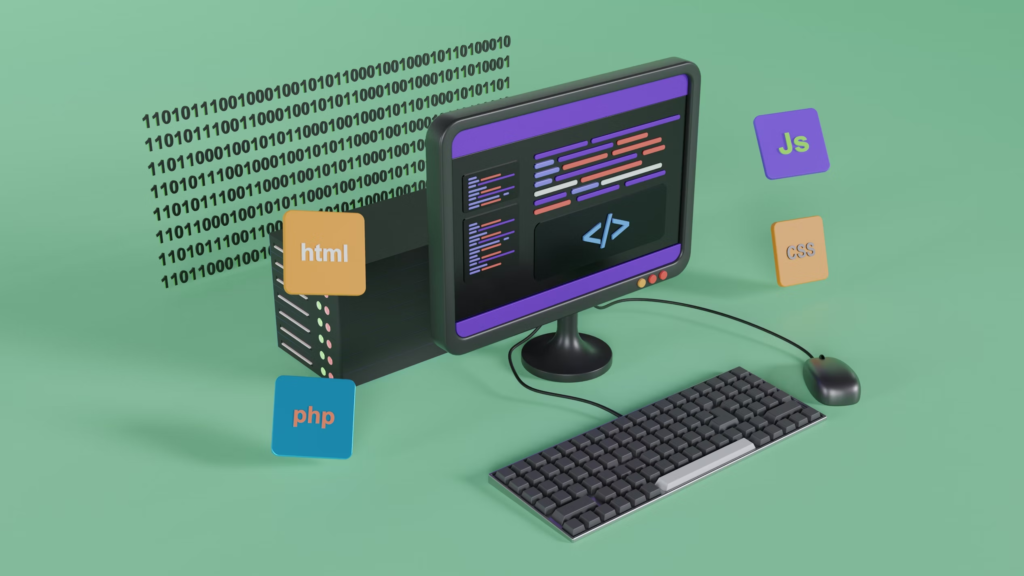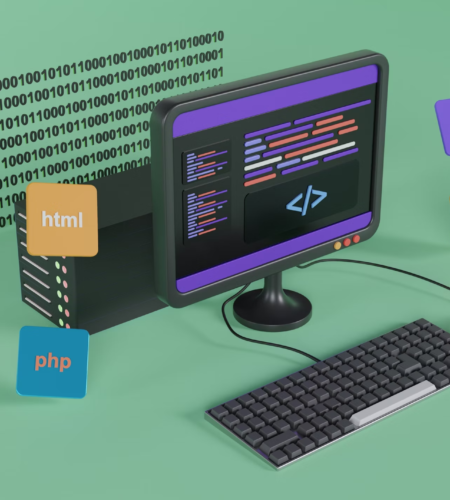Front-end web development is a fascinating and ever-evolving field, but it comes with its own set of challenges. The constant emergence of new technologies, shifting user preferences, and changing market trends have complicated front-end developers’ skill requirements and job expectations.

One significant issue is the “Great Divide” among developers. This divide separates those who are JavaScript-centric full-stack developers from those who focus on HTML/CSS and user experience.
The Great Divide in Front-End Development
This divide highlights two main factions:
- JavaScript-Centric Developers: These developers prioritize software frameworks and programming skills necessary for building complex web applications. Their toolkit includes JavaScript/TypeScript, Terminal/CLI, Node.js, APIs, GIT, Testing, CI/CD, and fundamental software principles.
- HTML/CSS-Centric Developers: These developers emphasize user interfaces, user experiences, interactions, accessibility, SEO, and the visual and structural elements of web pages and applications.
To succeed as a front-end developer in today’s job market, which heavily favors JavaScript-centric skills, one must strike a balance between both areas. This mix of skills is subjective and depends on the specific demands of each role.
Tips for Bridging the Divide:
- Continuous Learning: Invest time in learning both JavaScript-centric and HTML/CSS-centric skills. Platforms like freeCodeCamp, Codecademy, and Coursera offer courses that cover a wide range of front-end topics.
- Build Diverse Projects: Create projects that require you to use both sets of skills. For example, build a web application with a complex backend and a highly interactive and accessible frontend.
- Collaboration: Work with other developers who have complementary skills. This can be through hackathons, open-source projects, or team-based projects at work.
Technology Churn
Front-end development is marked by rapid changes in technologies, frameworks, and tools. While this makes the field exciting, it can also be daunting and exhausting for developers to keep up with the constant evolution.
Tips for Managing Technology Churn:
- Stay Updated: Regularly read tech blogs, follow industry leaders on social media, and join relevant communities like Stack Overflow, Hashnode, Codepen and Reddit. Personally, I add frontend topics to my Google Discover and Feedly to help me stay informed about the latest trends and best practices.
- Selective Adoption: Don’t jump on every new tool or framework. Evaluate new technologies based on your project requirements and their long-term viability.
- Invest in Core Skills: Focus on mastering fundamental concepts in JavaScript, HTML, and CSS. These skills are timeless and form the foundation for understanding new technologies.
Web Compatibility
Ensuring consistent functionality across various web platforms, such as browsers, webviews, and Electron, remains a significant task. Although not as complex as it once was, it still requires considerable effort and expertise.
Tips for Ensuring Web Compatibility:
- Use Polyfills and Shims: These tools can help bridge the gap between different browser capabilities. Libraries like Modernizr can detect feature support and provide fallbacks.
- Cross-Browser Testing: Regularly test your applications on multiple browsers using tools like BrowserStack or Sauce Labs. Automated testing can also help catch compatibility issues early.
- Follow Standards: Adhering to web standards and best practices reduces the risk of compatibility issues. Refer to resources from the World Wide Web Consortium (W3C) for guidance.
Cross-Platform Development
Creating a single codebase that works seamlessly on multiple devices, including smartphones, tablets, and desktops with different operating systems (iOS, Android, Windows), poses several challenges. This approach, known as cross-platform development, aims to deliver a unified experience across all devices.
Tips for Effective Cross-Platform Development:
- Responsive Design: Use responsive design techniques to ensure your applications look good on all screen sizes. Frameworks like Bootstrap and Foundation can help streamline this process.
- Progressive Web Apps (PWAs): PWAs offer a way to build web applications that provide a native app-like experience. They work offline, load quickly, and can be installed on a user’s home screen.
- Cross-Platform Frameworks: Consider using frameworks like React Native or Flutter to build applications that run on multiple platforms with a single codebase.
Responsive and Adaptive Design
Responsive and adaptive design are essential for creating websites and applications that provide optimal viewing experiences across a range of devices. However, implementing these designs can be complex and time-consuming, leading to intricate code that is challenging to maintain and test.
Tips for Simplifying Responsive Design:
- Mobile-First Approach: Start designing for the smallest screen size and gradually enhance the design for larger screens. This approach ensures a better experience on mobile devices.
- Flexbox and Grid: Utilize CSS layout modules like Flexbox and Grid to create flexible and responsive layouts with less code.
- Media Queries: Use media queries to apply different styles based on the device’s characteristics, such as width, height, and orientation.
The Complexity of Front-End Development
There is a growing consensus that current front-end development practices and tools are overly complex. This complexity places a strain on developers, many of whom feel that the focus on programming and thick client UI frameworks has overshadowed the importance of user experience.
Tips for Managing Complexity:
- Simplify Your Stack: Choose a set of tools and frameworks that cover your needs without adding unnecessary complexity. Avoid the temptation to use every new library or framework.
- Component-Based Architecture: Break down your UI into reusable components. This approach, popularized by frameworks like React and Vue, can help manage complexity and improve maintainability.
- Documentation: Maintain clear and comprehensive documentation for your projects. Good documentation helps new team members get up to speed quickly and ensures consistency in your codebase.
Rediscovering the Essence of Front-End Development
Historically, front-end development was centered on the user and the user interface, with programming playing a secondary role. Today, the focus has shifted towards being more computer science-oriented. This shift has led to a more complex and less user-focused approach. It’s crucial to find a balance and return to prioritizing user experience and interface design.
Tips for Refocusing on the User:
- User-Centered Design: Always prioritize the needs and preferences of your users. Conduct user testing and gather feedback to inform your design decisions.
- Accessibility: Ensure your applications are accessible to all users, including those with disabilities. Follow accessibility guidelines (e.g., WCAG) and use tools like aXe and Lighthouse to check your compliance.
- Performance Optimization: Optimize your applications for speed and performance. Fast-loading websites provide a better user experience and improve SEO.
Securing Employment in Front-End Development
Finding a job in front-end development has become increasingly complex. The interview process often prioritizes subjective and irrelevant criteria, failing to assess the skills needed for the role. This flawed hiring process can lead to candidates being selected based on chance or networking rather than a thorough evaluation of their technical abilities, experience, and critical thinking skills. Effective hiring practices involve acknowledging the unpredictability of the process and adopting a holistic approach, such as engaging candidates in short-term contracts to evaluate their performance in real-world scenarios.
Tips for Job Seekers:
- Portfolio: Build a strong portfolio showcasing your projects and skills. Highlight your contributions to open-source projects and any freelance work you’ve done. See tips for BootCamp graduates here.
- Networking: Attend industry events, join tech communities, and connect with other professionals on platforms like LinkedIn, Telegram groups or Slack. Networking can open up job opportunities and provide valuable insights.
- Continuous Improvement: Keep learning and updating your skills. Stay current with industry trends and advancements to remain competitive in the job market.


Fantastic site A lot of helpful info here Im sending it to some buddies ans additionally sharing in delicious And naturally thanks on your sweat
Superb layout and design, but most of all, concise and helpful information. Great job, site admin. Take a look at my website Webemail24 for some cool facts about Social Media Marketing.
Thanks a lot!Your support and encouragement mean a lot, I will check out your site.
Hey there, I love all the points you made on that topic. There is definitely a great deal to know about this subject, and with that said, feel free to visit my blog Seoranko to learn more about SEO.
Thank you so much for your kind words! It means a lot to know that the content resonates with you and adds value. I will certainly check out your blog.
Ny weekly I’m often to blogging and i really appreciate your content. The article has actually peaks my interest. I’m going to bookmark your web site and maintain checking for brand spanking new information.
Thank you so much for your kind words! I’m thrilled to hear that you enjoyed the article and that it sparked your interest. Your support means a lot, and I’m glad you’re planning to stay tuned for more updates. Don’t hesitate to reach out if there’s a specific topic you’d like to see covered in the future!